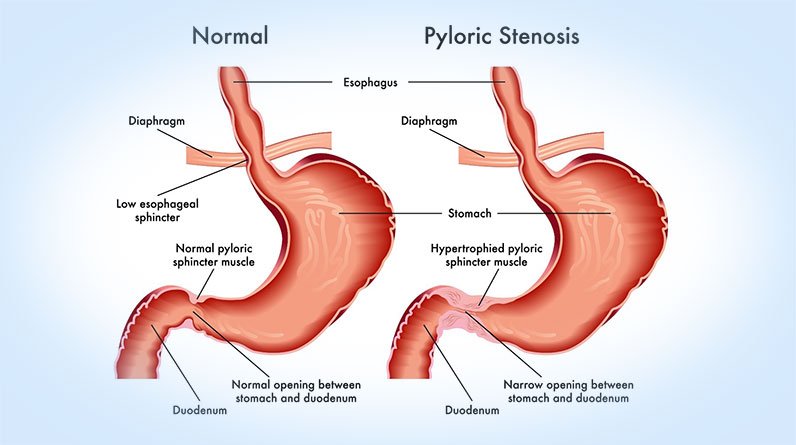
Pediatric Surgical Conditions
A child experiences a wide array of health conditions during their lifetime, and many of the health conditions that occur can require surgical treatment. Some of these conditions will require immediate surgical attention soon after birth.
While surgery can induce fear in many parents, the pediatric surgical conditions discussed here have optimistic long-term outcomes. Surgical risks are certainly evident; however, medical advancement has made surgical treatment by qualified pediatric surgeons a routine event.
Some pediatric surgical conditions occur rarely, yet they are well-known conditions in the medical community. In what follows, we’ll be focusing on a few of the more common pediatric surgical conditions. Specifically, we’ll define each, discuss their etiology, and explore available treatment options.
Types of Pediatric Surgical Conditions
There are several types of pediatric surgical conditions, some that are routine and some that are much more complex.
The following will be a discussion of four of some of the more common pediatric surgical conditions.
Pyloric Stenosis
As a condition in which the pylorus, which is the connection between the stomach to the small intestine, has enlargement of its muscular wall. This overgrowth narrows the passage between the stomach and the intestine to the point that little to no stomach content can pass into the small intestine. This causes projectile vomiting in these babies that are usually under the age of six months old.
Although the exact cause of pyloric stenosis is unknown, it’s presumed that most cases are genetic. The diagnosis can be made by a combination of physical examination and ultrasound. In all cases, pyloric stenosis will need to be treated with surgery, during which a pyloromyotomy is performed. The muscle of the pylorus is incised to create a larger passageway for stomach contents to pass into the small intestine.
Gastroschisis
As a birth defect involving a small defect in the abdominal wall near the umbilicus, gastroschisis is often characterized by protruding intestines lying outside of a newborn’s abdomen.
While this can typically be a fearful experience for parents, the surgical treatment for the condition is usually straightforward. The intestinal contents are reduced into the intraabdominal cavity, and the defect is repaired. Most babies grow up to live a completely normal life. In some cases, individuals can experience some digestive issues later in life.
The diagnosis is easily identified at birth, and surgical repair is performed urgently. The cause of the defect that leads to the condition is believed to be related to genetics or health risk factors of the parent. Thus, it’s imperative for parents to maintain a healthy lifestyle and avoid things like substance abuse and smoking prior to and during pregnancy.
Inguinal and Umbilical Hernias
There are several types of hernias. In babies and children, the most common types include inguinal (inner groin) and umbilical (naval region). Inguinal hernia is the most common type, comprising about 95% of all hernia diagnoses.
No matter the type, a hernia is apparent when intraabdominal tissue protrudes through a weakened area of muscle in the abdominal wall. The condition is usually not painful, and the hernia will be able to be reduced through the abdominal wall defect when examined.
In the case of pediatric hernias, the cause is genetic inheritance. In some cases, umbilical hernias can close off if they are small. If conservative treatment does not work and the hernia persists, then surgery will be necessary to close the defect. Pediatric recovery from hernia surgery is very fast, with little to no pain at all.
Intussusception
A pediatric bowel obstruction is often the result of intussusception. This condition is most common in baby boys under the age of 36 months old and occurs when one intestine “telescopes” inside of another intestine, ultimately causing a blockage and associated signs and symptoms.
Though the exact etiology is difficult to determine, most medical opinions are that the condition is brought about by swelling from a viral infection or from a genetic cause.
Treatment options for intussusception include radiological procedure utilizing an enema of either air or saline to reduce the obstruction. The radiologist may use either ultrasound or fluoroscopy to perform the procedure. This technique is very successful in achieving reduction of the obstruction in the majority of cases. In addition, the nonoperative procedure can be repeated if the condition recurs. If the nonoperative technique is unsuccessful, then surgery will be required to relieve the obstruction.
Postoperative recovery is generally fast, with the child being able to feed naturally two to three days afterwards.
Final Thoughts
Some of the most common surgical conditions seen in pediatrics are identified and treated immediately after birth. Other cases occur 6-36 months post-birth, varying in severity and optimal treatment, and may often be managed nonoperatively.
Most surgical conditions have successful recoveries and good outcomes, allowing the child to have a healthy life afterward.
